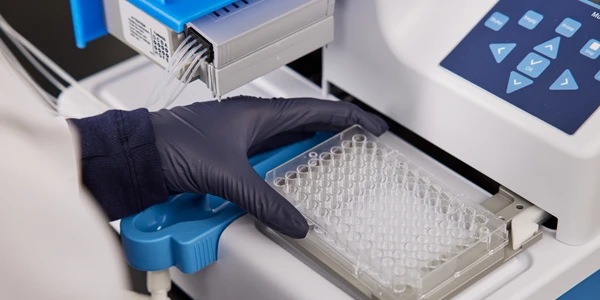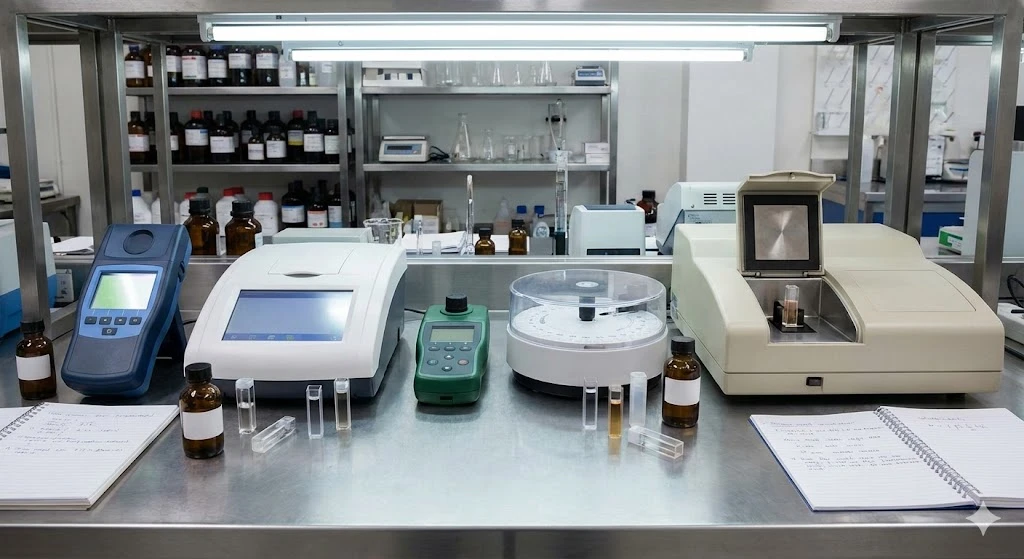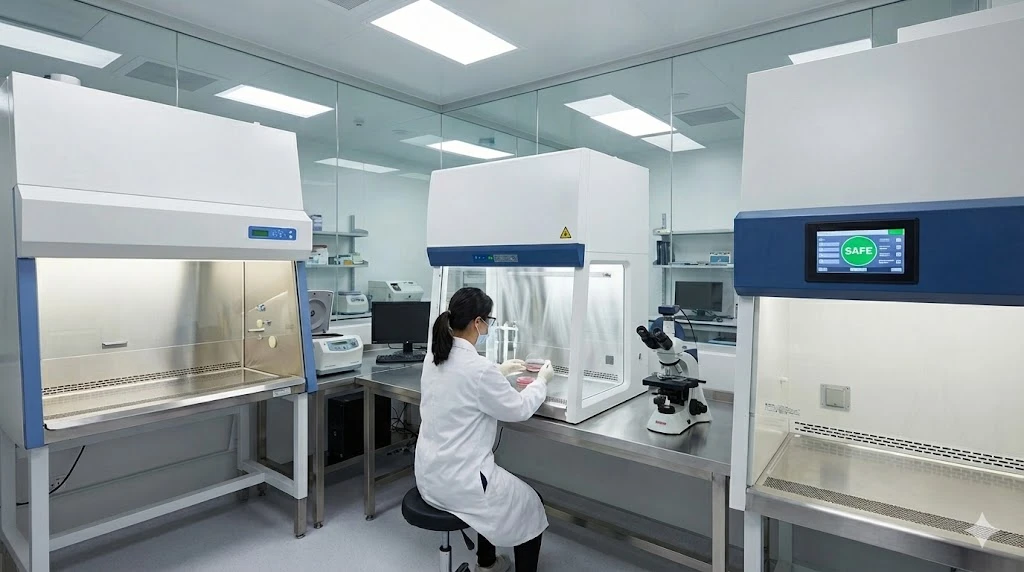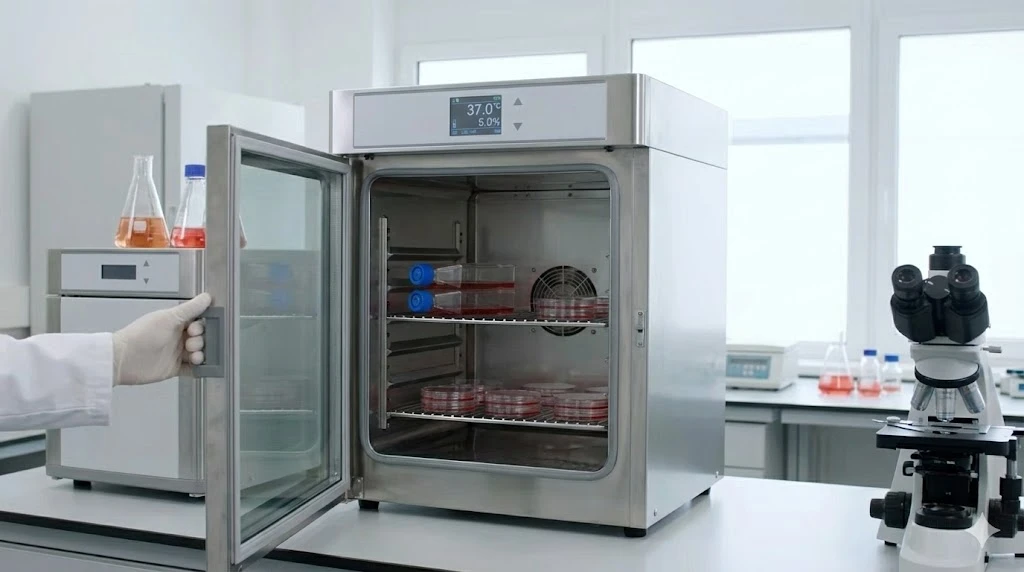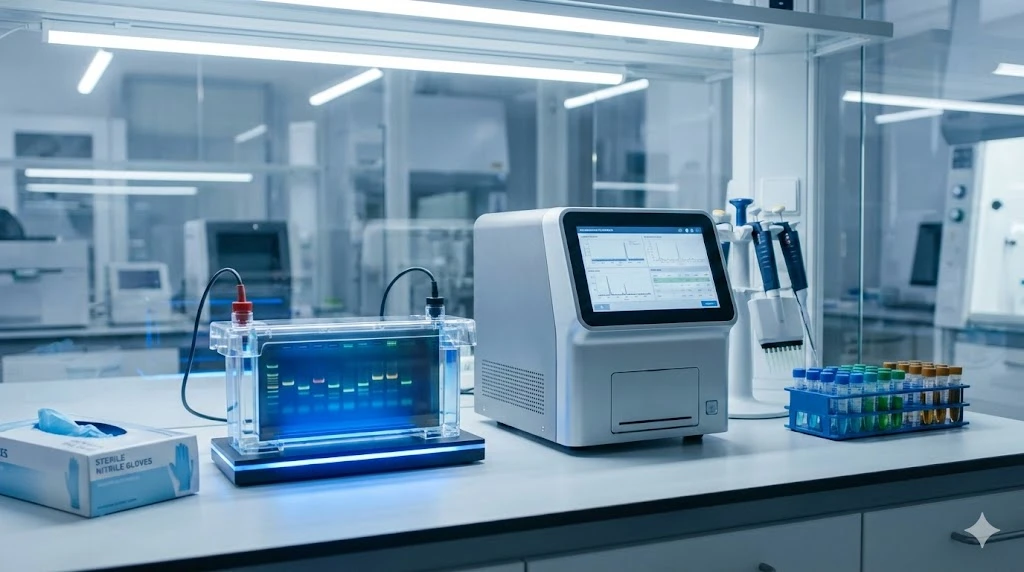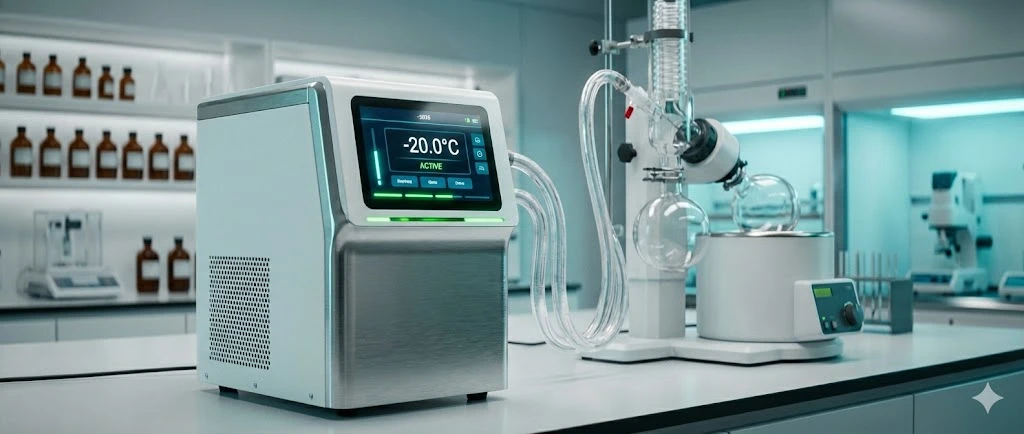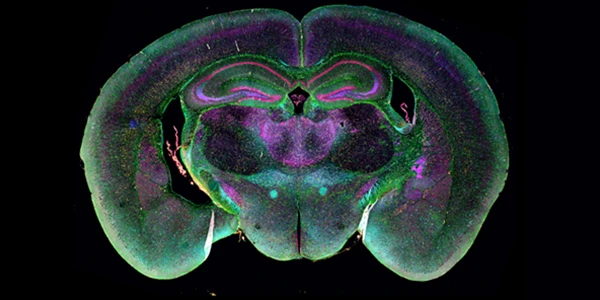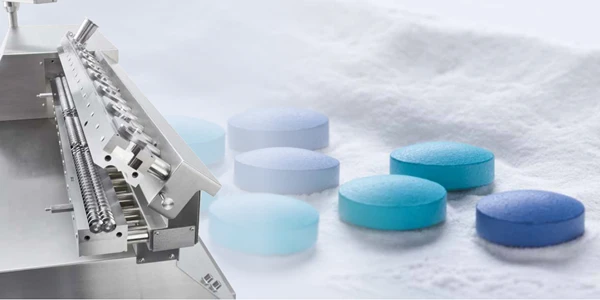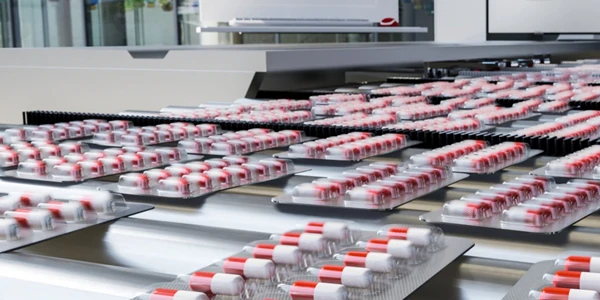How to Select the Right Gamma Counter for Radioimmunoassays
The reliable execution of radioimmunoassays hinges on the accurate detection of gamma radiation, making the selection of a robust gamma counter a critical laboratory procurement decision. This apparatus serves as the cornerstone for quantitative assessment in diverse fields, including endocrinology, pharmacology, and oncology, where precise measurement of radiolabeled substances is paramount. Ensuring that the chosen instrument aligns with the laboratory’s specific radionuclide profiles and throughput demands is essential for maintaining operational integrity and achieving high-quality results. The core of any gamma counter is its detection system, which fundamentally determines the precision and speed of all subsequent radioimmunoassays. The most prevalent technology utilizes thallium-activated sodium iodide, or NaI(Tl), scintillation crystals. When a gamma photon strikes the crystal, it produces a flash of light (scintillation) proportional to the photon's energy, which is subsequently converted into an electrical pulse by a photomultiplier tube (PMT). The efficiency of this energy conversion is the primary factor differentiating one system from another. A critical design consideration is the crystal’s geometry, specifically the dimensions of the well into which the sample tube is placed. The industry standard involves gamma counter systems designed to maximize the four-pi geometry, meaning the detector surrounds the sample as completely as possible to capture the maximum number of photons emitted in all directions. Key technical specifications that impact efficiency include: Crystal size: Larger crystals offer a greater probability of interaction with high-energy photons, translating to higher counting efficiency, particularly for radionuclides like Iodine-125 (I-125) commonly used in radioimmunoassays. Energy discrimination (multi-channel analysis): Modern gamma counters utilize multi-channel analyzers to sort detected pulses based on their energy level. This allows the instrument to count photons within a specific energy window, effectively isolating the signal from the desired radionuclide (e.g., I-125 at 27-35 keV) while excluding lower-energy noise and scattered radiation. This feature is crucial for multiplexed radioimmunoassays or when dealing with samples containing multiple gamma-emitting isotopes. Shielding: Effective lead or heavy metal shielding surrounding the detector reduces background radiation from the environment, improving the signal-to-noise ratio and lowering the detection limits required for sensitive radioimmunoassays. The choice between single-well and multi-well detectors is also a decision driven by counting efficiency and throughput. While single-well counters offer superior shielding and often better efficiency for individual samples, multi-well systems compromise slightly on individual sample efficiency to achieve significantly higher throughput. For high-volume clinical or research laboratories, the primary operational concern beyond detection efficiency is throughput, which is dictated by the instrument's sample capacity and degree of automation. Choosing the optimal system involves balancing the required turnaround time with the initial investment cost of the gamma counter. Sample Capacity Configurations: System Type Capacity (Typical) Automation Level Ideal Application Single-well manual 1-5 samples Low Low-volume research, specialized assays, training. Automated Single Detector 50-100 samples Medium Mid-volume, batch-processing radioimmunoassays. Automated Multi-Detector (4, 8, or 10 wells) 200-1000+ samples High High-throughput screening, core lab clinical RIA testing. A multi-detector gamma counter provides a nearly linear increase in throughput capacity by simultaneously counting multiple samples. For instance, an eight-well counter can process samples roughly eight times faster than a single-well unit, drastically reducing the total assay time. However, this architecture requires careful inter-detector calibration to ensure that the counting efficiency and energy windows are identical across all detectors, a process that is vital for accurate and comparable results in large-scale radioimmunoassays. GEMINI (2025) Automation features are non-negotiable for high-volume operations. These include automated loading and unloading systems, bar-code readers for sample tracking and protocol assignment, and integrated robotics that minimize human interaction with potentially contaminated samples. The reliability of these mechanical components, including the sample changer and conveyor belt, must be rigorously evaluated, as they are often the most common points of operational failure in high-throughput gamma counter systems. Maintenance contracts that cover these mechanical elements are essential for sustaining maximized efficiency. The raw counts generated by a gamma counter are only the first step; the true value lies in the sophistication of the data processing and analysis software. Modern instrumentation must integrate powerful software capable of executing complex calculations, quality control (QC) checks, and seamless data export for accurate final results in radioimmunoassays. Essential Software Capabilities: Standard Curve Fitting: The software must offer multiple curve-fitting algorithms (e.g., cubic spline, weighted logit-log, four-parameter logistic) to accurately transform the measured counts into concentration units. The ability to select and validate the best-fit model for a specific RIA protocol is paramount. Calibration and Background Subtraction: Automated routines for detector calibration, including peak energy determination and window setting, ensure consistent performance. Automatic background subtraction, utilizing a designated blank sample or a predetermined factory background, is standard practice for improving limit of detection. Quality Control (QC) Tracking: Robust software includes built-in QC modules that track control material performance over time. This typically involves Levey-Jennings plots for visual analysis, calculation of standard deviation indices, and immediate flagging of out-of-range results. This rigorous QC process verifies the long-term stability and accuracy of the gamma counter for all executed radioimmunoassays. Data Integration and LIMS Compatibility: Seamless integration with the laboratory information management system (LIMS) is crucial. The gamma counter must support common data formats (e.g., XML, CSV) and possess network capabilities for automated transmission of results, minimizing transcription errors and ensuring regulatory traceability. Furthermore, user interface design is an often-overlooked feature. An intuitive interface simplifies protocol setup, reduces training time for laboratory personnel, and allows for rapid troubleshooting, contributing significantly to overall laboratory efficiency. The selection of a gamma counter must consider its long-term operational costs, reliability, and its adherence to strict regulatory requirements governing the use of radioisotopes and clinical data reporting. These factors affect the total cost of ownership and the laboratory's audit readiness. Compliance and Safety: Regulatory Standards: Any gamma counter used for clinical radioimmunoassays must meet standards such as Good Laboratory Practice (GLP) or Good Manufacturing Practice (GMP). Documentation must be available confirming that the system provides auditable data trails, user access control, and secure data storage as required by organizations like the FDA. Safety Features: Given the handling of radioactive materials, instruments must feature substantial internal lead shielding not only to protect the detectors but also to minimize operator exposure. Integrated waste management protocols or provisions for safe sample disposal after counting are critical. Service and Maintenance: The lifespan and reliability of a gamma counter are heavily dependent on comprehensive maintenance. Laboratories should evaluate the manufacturer's service network, response time, and the availability of essential spare parts, especially for proprietary components like the NaI(Tl) crystals and PMTs. A full-service contract, including periodic preventive maintenance (PM) checks, is advisable. These checks include validating detector uniformity, recalibrating energy windows, and servicing mechanical automation components to ensure the continuous, accurate execution of radioimmunoassays. The longevity of a system can often exceed a decade, making future software updates and operating system compatibility a factor in the selection process. A robust and well-supported platform ensures that the high initial capital investment provides maximum operational returns over time. Choosing a gamma counter requires a comprehensive assessment of analytical performance, throughput capacity, and operational support. The ideal instrument will maximize the counting efficiency for the specific radioisotopes used in core radioimmunoassays while providing the necessary automation and sophisticated software required for high-volume, compliant data management. By focusing on detector integrity, throughput logistics, and robust compliance features, a laboratory can secure a reliable cornerstone for its radiochemistry operations. How does energy discrimination in a gamma counter improve radioimmunoassays?
Energy discrimination allows the gamma counter to selectively count only those photons falling within a defined energy range, or peak, corresponding to the specific radioisotope used in the radioimmunoassays. This process filters out noise from background radiation, scattered photons (Compton scatter), and other low-energy contaminants, thereby significantly improving the signal-to-noise ratio and the overall precision of the measurement. What is the significance of crystal size when selecting a gamma counter?
The size of the NaI(Tl) crystal in the gamma counter is directly proportional to its counting efficiency, particularly for higher-energy gamma emitters. A larger crystal offers a thicker target, increasing the probability that a photon emitted from the sample will interact with the crystal and be detected, leading to shorter counting times and higher accuracy in radioimmunoassays. Is maintenance frequency different for automated gamma counters used in high-volume radioimmunoassays?
Yes, automated gamma counters typically require more frequent preventive maintenance than manual systems. While the detector crystals themselves are highly stable, the automated sample changers, robotics, and bar-code readers in high-throughput systems contain mechanical components that undergo high cycles of use and require regular inspection, lubrication, and calibration to prevent operational downtime for radioimmunoassays. What compliance standards apply to gamma counter data output?
For clinical and pharmaceutical applications, the data output from a gamma counter must comply with regulatory standards such as GLP (Good Laboratory Practice) and GMP (Good Manufacturing Practice). This requires the system to provide full audit trails, secure, timestamped data records, user authentication, and traceable calibration history to ensure the integrity of results obtained from radioimmunoassays. This article was created with the assistance of Generative AI and has undergone editorial review before publishing.Detector Technology and Counting Efficiency for Optimal Radioimmunoassays
Maximizing Throughput: Evaluating Gamma Counter Sample Capacity and Automation
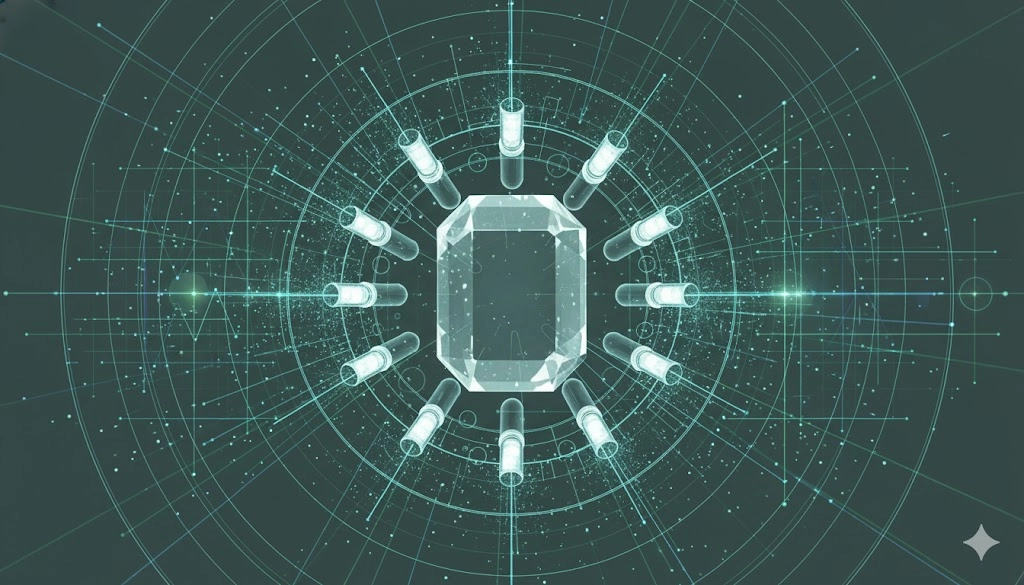
Advanced Software Features and Data Processing in Modern Gamma Counters
Ensuring Regulatory Compliance and Long-Term Gamma Counter Operation
Strategic Selection Criteria for Gamma Counter Technology
Frequently Asked Questions (FAQ) About Gamma Counter Selection
